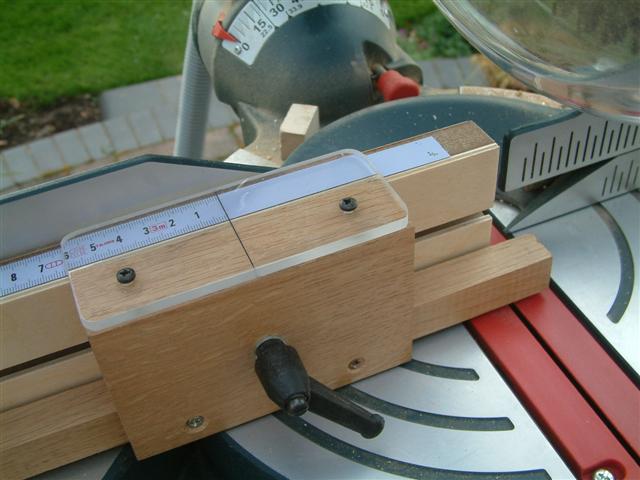Right, I've found some pics.
These two pics show the profile of the fence and the block, with its clamping Bristol lever. There are a couple of things to note:
Firstly, I wouldn't make the fence like that again. This one is a piece of MDF with a groove routed down it, then a piece of thin ply glued on top. The problem is that the fence does not stay straight, but bends according to the temperature. On a hot day it looks like a banana. I would laminate it from three layers of 6mm MDF next time (and there will be a next time - this is good!).
Secondly, make sure you position the the Bristol lever high enough so that it can swing. Mine just fouls the bed of the saw when it is close to the blade.
Here, the stop reads zero, but it is not yet calibrated. Trim the end so that it is zero as well as reading zero, like this:
So now I can set it to any value I like and I know it is right, first time every time!

I would recommend making two, one about a metre long and one as long as you can - 3m, say. I made just a long one, but it is a bit unwieldy, especially as I rarely used its full length.
They can be attached with a toggle clamp quite easily, with a couple of locating dowels so that they always sit in exactly the same place:
It looks as if I took that photo before the locating dowels were in place. The only thing that is locating it in that picture is the togle clamp itself. I know that it does have a couple of locating dowels which fit in two holes in the casting.
One more thing, make sure you get a measure that reads from right to left. If you use a standard tape measure then the numbers are upside down and it is very easy to confuse 69 with 96, etc. DAMHIKT!
Cheers
Steve






